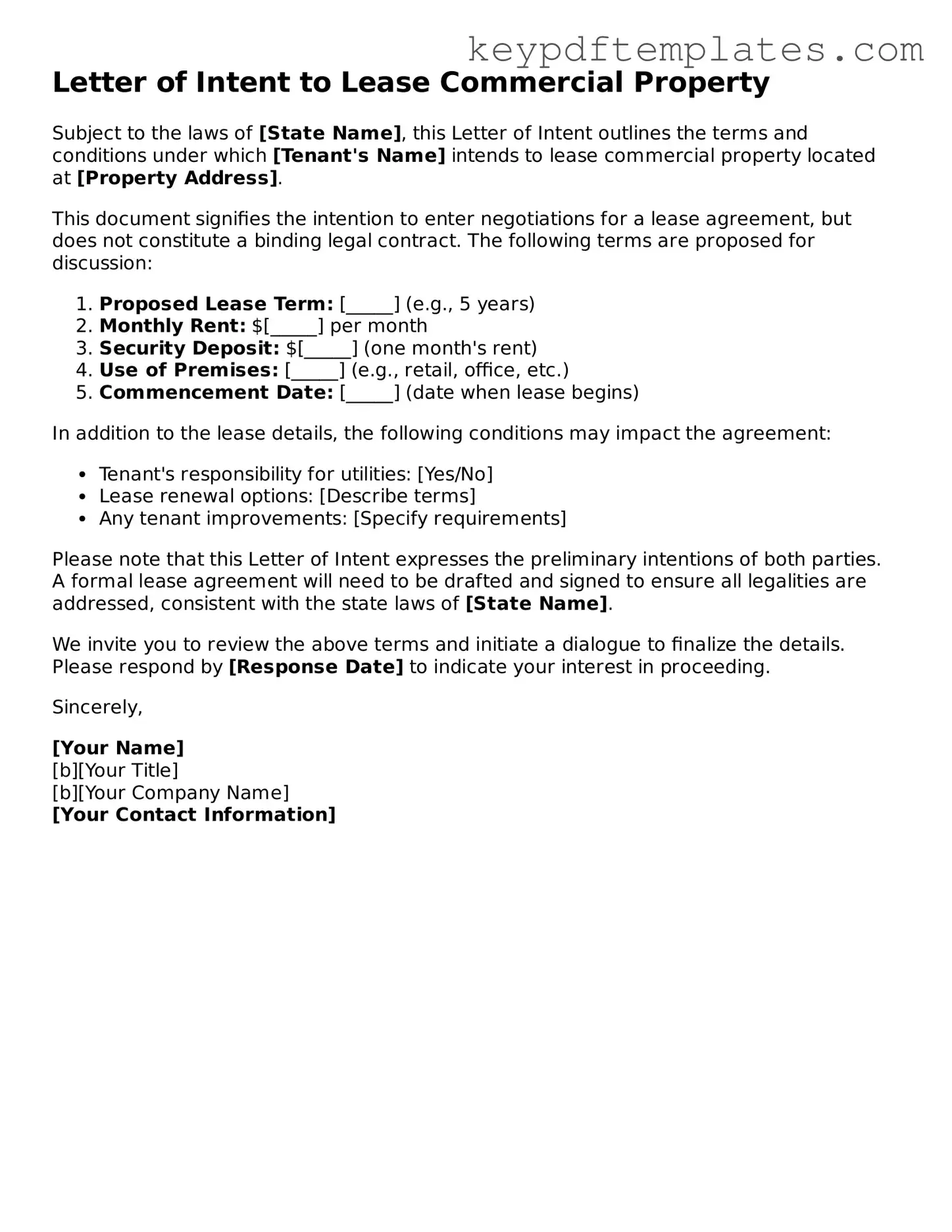Printable Letter of Intent to Lease Commercial Property Template
The Letter of Intent to Lease Commercial Property is a preliminary document outlining the key terms and conditions that parties intend to include in a formal lease agreement. This letter serves as a roadmap for negotiations, helping both landlords and tenants clarify their expectations before entering into a binding contract. Understanding this form is crucial for anyone looking to navigate the complexities of commercial leasing effectively.
Modify Document Online
